Introduction
People have tried to persuade each other for thousands of years. The start of oral history is itself a form of persuasion passed between generations by telling stories. This essay attempts to provide an overview of captology, which is the study of computers as persuasive technologies, and explores the specific captology of http://www.drinkaware.co.uk. We begin by defining what we mean by persuasion as a concept and look at the psychological theories which have been used to study the area including rhetorical models, motive-goal models and purely psychological models. It examines the ethical concerns which arise in this area, with particular focus on coercion and seduction. We conclude with a look at where we think the discipline of captology is going in the future.
Persuasion
“Few are open to conviction, but the majority of men are open to persuasion.”
Johann Wolfgang von Goethe (1832)
Before we examine the area of Captology, or persuasive technology, we must define what we mean by persuasion. Persuasion can be defined as an attempt to influence behaviors, feelings or thoughts (Reardon, 1991). Fogg alters this definition to stipulate that these attempts to influence must be non-coercive (must not influence by force), non-manipulative and non-deceiving. He also asserts that there must be intentionality behind the influence attempt, or that any accidental changes in behaviors, feelings or thoughts should not be viewed as persuasion (B. Fogg, 2002a).
Previous theories of persuasion can be divided into 3 main categories: rhetorical models, motive-goal models or psychological models (Shelby, 1986). Rhetorical models date back to the time of Aristotle and are concerned with persuasion by using style, presentation, message content and arrangement. Firstly, the motive-goal model states that you must find out the goals of the audience you are trying to persuade and try and motivate them based on those goals. It relies upon previous studies on how to motivate people, with particular reliance on Maslow’s hierarchy of needs as a tool to explore the needs of the audience (Meyer, 1955). The second group, Psychological models, of persuasion initially focused on providing messages in a certain sequence such as the AIDA approach (Attention, Interest, Desire, Action). Variations on this approach include the 4 Ps (Promise, Picture, Prove, Push) and Monroe’s motivated sequence (attention, need, satisfaction, visualization and action) (Monroe, 1962). These sequences were designed with various psychological theories in mind, particularly around message presentation and reader attention (Shelby, 1986) which themselves are related to studies of central and peripheral routes to persuasion. Lastly, later psychological models have tried to use Learning theory, which focuses on stimulus and responses (Andersen, 1978), Consistency theory, which examines how receptive someone is to persuasion based on their pre-existing opinions (Eagly & Himmelfarb, 1974), Social Judgment theory, which explores how people perceive messages (Sherif & Hovland, 1961) and Functional theory, which focuses on an individual’s needs and how to match these needs to persuasive messages (Katz, 1960). The use of conformity or social norms has also been studied as related to persuasion, which many of these learning’s incorporated into persuasive systems.
Persuasion and Ethics
Just because you can persuade someone, does not mean that you should persuade them. Deception and coercion are types of persuasion that should always be avoided but conditioning, surveillance and punishment are more open for debate. Conditioning using rewards could be a powerful force for positive change, but if it causes changes without the user knowing, there could be an issue. Technology has particular issues with regard to ethics and persuasion because (1) novelty can divert from persuasive effects, (2) the positive reputation of computers can be exploited, (3) computers are persistent, (4) computers control the interactive experience, (5) technology can cause emotional effects, but are not themselves subject to emotion, and (6) technology cannot be made responsible for outcomes (B. Fogg, 2002b, 2003a).
Particular attention should be drawn to seductive uses of technology. Seduction is a type of intimate and emotional persuasion which can be highly manipulated by technology designers. It may have valid uses which benefit the user of the technology, but more often than not it can be exploited for commercial reasons (Newell, 2005). Aligned with seduction is the concept of flattery, which can be misused by technologies acting in the role of social actors, which is discussed below.
Captology
CAPTOLOGY (Computers As Persuasive TechnOLOGY) studies the use of computers, and technology in general, as persuasive devices (Figure 1) (B. Fogg, 1999, 2002a, 2003a). It explores these technologies by examining their intent, function, level of analysis and design space all of which will now be described. 3 different design intentions were identified by Fogg for persuasive technology: endogenous (where intent comes from those who produce the technology), exogenous (where intent comes from those who distribute the technology) and autogenous (where intent comes from those who use the technology). Examples of each are an energy conservation game (endogenous), providing an iPad for educational reasons (exogenous) or buying Nike+ to motivate yourself to run more (autogenous) (B. Fogg, 1999).
Figure 1: Captology links computers and persuasion
Fogg proposes that persuasive technology function as tools, media or social actors. Tools provide users new abilities or simplify previous tasks. Media conveys symbolic information (text, data, charts) or sensory information (video, VR, simulations). Technology becomes a social actor when it employs animation techniques (emotions, voice control), plays a social role (coach, pet, friend) or appears to engage in social rules (greetings, turn taking). He summarizes this using the functional triad (Figure 2) (B. Fogg, 1999).
Levels of analysis describe the relationship between the technology used and the intended behavior/attitude change. The differing levels proposed are:
- The individual (person)
- The family
- Organizational
- Community
A good example of this is the WII console which is designed to increase the time families play computer games together (family level of analysis). The captology design space mainly refers to the domain the technology is influencing e.g. safety, environmental issues, health (B. Fogg, 1999).
Figure 2: The Functional Triad
Previous work by Fogg also described technologies in terms of macrosuasion and microsuasion. Macrosuasive technologies are where an entire product is designed to persuade e.g. drinkaware.co.uk. Microsuasive technology include persuasive elements, but their overall intent is not persuasive e.g. usage reminders from Facebook (Figure 3) (B. J. Fogg, 1998).
Figure 3: Usage reminder from Facebook with 4 links to login
Amazon.com provides a great example of a macrosuasive technology where:
Everything on the Web site contributes to this result: user registration, tailored information, limited-time offers, third-party product reviews, one-click shopping, confirmation messages, and more. Dozens of persuasion strategies are integrated into the overall experience. Although the Amazon online experience may appear to be focused on providing mere information and seamless service, it is really about persuasion—buy things now and come back for more. (p. 135) (B. Fogg, 2002a)
Another useful tool created by Fogg is the behavior grid which attempts to map behavior changes with time spans (Figure 4) (Fogg, 2011). It is especially useful for designers to discuss the persuasive intent of their product and it allows behavior changes (increase, decrease, stop, new, familiar) to be linked to time spans (once-off, duration, forever).
Figure 4: Behavior Grid with examples
Some interesting trends have been identified linking persuasive technology to age and socio-economic status. With regard to age, most current persuasive technologies target children and teens. The researchers noted that this was not an unusual finding given that our culture is comfortable defining the behaviors for this age group. Current users of these technologies also appear to be of higher socioeconomic status. They are either wealthy or are part of wealthy institutions or organizations. This is an interesting finding which could mean there is a greater digital divide between social classes than we currently see. There is a huge potential advantage to the social class that understands the persuasive capability of technology (King & Tester, 1999).
One of the most effective ways for technology to be persuasive is to leverage accepted psychological theories. In particular, reciprocation and commitment have been shown to be useful for persuasion, especially when used with mobile devices. An interesting learning has been that when utilizing psychological theories in persuasive contexts, the user interface employed must be simple enough so as not to require much cognitive capacity to process (Golder, 2004). Punishments and rewards, likes and dislikes, and positive reinforcement can also be useful for persuasive technologies (del Valle & Opalach, 2005). Usage of Gardner’s Multiple Intelligence theory has been shown to have positive effects in designing learning software which works for a range of student types (Lucero, Zuloaga, Mota, & Muñoz, 2006).
The Future of Captology
Fogg has described captology as the next major wave in computing (Figure 5) which follows on from the previous waves of functionality, entertainment and usability (B. Fogg, 2002a).
Figure 5: Major computing waves
As with the majority of areas in computing, the future of captology is mobile. Mobile computing offers several advantages for persuasive technology. It is always available to the user. It is simple and easy-to-use by design. It can leverage the kairos principle, which means it can be influential at exactly the right time. Users often see their mobile devices as extensions of themselves e.g. the Finns use the term Kanny for their phones which translates as ‘extension of the hand’. All of these factors make persuasive mobile technology extremely powerful (B. Fogg, 2003a; Johnson, Isham, Shah, & Gustafson, 2011). More general trends in the area point toward specialization in persuasive devices, use of technology for persuasion in non-commercial areas like healthcare, and refinement of the techniques and strategies used to influence via technology. Examples of how persuasive computers could be used for non-commercial purposes are to increase driving safety, goal setting, management of diabetes, and stopping smoking. The possibilities are endless (King & Tester, 1999). One interesting application of persuasive technologies has been in the management of substance abuse which cost the U.S. $346 billion per year. Persuasive technologies have been particularly successful using the community reinforcement approach, where they have been shown to be as successful as therapist-delivered programs (Johnson et al., 2011).
Captology and Ethics
Heckman et al. (2000) suggest that as a general rule, designers must design their technology so that the users, who will be persuaded, are the people who will ultimately benefit, not the sellers of the technology. Berdichevsky et al. (1999) proposed a framework to be used to evaluate the ethics around persuasion and technology. These include: motivations, methods and intended outcome should be transparent. Responsibility should lie with the creators of the persuasive technology. User privacy should be respected. Users should not be lied to or mislead. Finally, technology creators should not work on any technology they would not use themselves. Fogg recommends using the following questions to help investigate if they are any ethical issues with your technology:
- Does the persuasive technology advocate what’s good and fair?
- Is the technology inclusive, allowing access to all, regardless of social standing?
- Does it promote self-determination?
- Does it represent what’s thought to be true and accurate? (B. Fogg, 2002a)
If you can answer ‘no’ to any of these questions, there may be an ethical concern.
Web sites and captology
In terms of persuasiveness, the volume of information on the web can be a positive and negative factor. The fact that some web content is extremely credible, while others are not, can lower it’s credibility overall. The major challenges facing the web as a persuasive medium are the lack of a gate keeping or quality-control mechanism, the fact that incorrect information can be duplicated very quickly (twitter for example), the general rule that the source of information may not be clear and, finally, the fact that users need to acquire new skills to access site credibility (such as checking for HTTPS in a URL) (Danielson, 2005; B. Fogg, 2002a). Fogg’s previous work at Stanford focused on the credibility of web sites in particular. He provided the following 10 guidelines to improve the credibility of a web site:
- Make it easy to verify the accuracy of the information on your site.
- Show that there’s a real organization behind your site.
- Highlight the expertise in your organization and in the content and services you provide.
- Show that honest and trustworthy people stand behind your site.
- Make it easy to contact you.
- Design your site so it looks professional (or is appropriate for your purpose).
- Make your site easy to use — and useful.
- Update your site’s content often (at least show it’s been reviewed recently).
- Use restraint with any promotional content (e.g., ads, offers).
- Avoid errors of all types, no matter how small they seem. (B. J. Fogg, 1999)
In 2002, Fogg proposed his Prominence-Interpretation theory to be used in assessing web site credibility (B. Fogg, 2003b). In this he suggests that:
Credibility assessment is an iterative process driven by (a) the likelihood that particular Web-site elements (such as its privacy policy, advertisements, attractiveness, etc.) will be noticed by an information seeker (prominence), and (b) the value that element will be assigned by the user in making a credibility judgment (i.e., increases or decreases perceived credibility) (interpretation). Several factors can influence the likelihood of an element being noticed, including the user’s level of involvement, the significance of the information sought, and the user’s level of Web experience, domain expertise, and other individual differences. Similarly, interpretation is influenced by such individual and contextual factors. Noticeable Web-site elements are evaluated until either the user is satisfied with an overall credibility assessment, or a constraint (often associated with lack of time or motivation) is reached. (p. 142) (B. Fogg, 2002a)
Drinkaware.co.uk
Drinkaware is an independent UK charity which aims to promote responsible drinking and reduce alcohol misuse. It’s main website, http://www.drinkaware.co.uk (Figure 6), offers a highly professional and media-rich portal to pursue these goals.
Figure 6: http://www.drinkaware.co.uk (“Drinkaware,” 2011)
The major sections of the website are ‘alcohol and you’, which gives advice for the best ways to manage and integrate safe alcohol consumption into your daily activities. ‘Facts’, lists various alcohol related facts, included effects on different organs of the body. ‘Tips & tools’, gives calculators for measuring alcohol consumption. ‘What we’re doing’, contains details on all of the campaigns run by Drinkaware. ‘Talking to under 18s’, lists tips for parents and professionals to discuss alcohol related issues with children and young adults. One of the most impressive sections of the site is ‘MyDrinkaware’ which offers a personalized portal for tracking your drinking habits (Figure 7). It allows you to (1) track how much you have drunk on any date, (2) count your alcohol related calories, (3) track how much you have spent on alcohol, (4) keep a drinking diary, (5) set drinking goals, and (6) get email reminders. It also works on mobile devices and tablets.
Figure 7: MyDrinkaware (“Drinkaware,” 2011)
We will examine this web site using all of the previously identified Captology factors. This detailed review can be found in Table 1 below.
Table 1
Captology Review of http://www.drinkaware.co.uk
| Measure | Site results | Comments |
| 1. Design intention | Endogenous | The site was purposely designed by the development team to persuade users to be responsible drinkers. |
| 2. Functional triad | The web site sits in the center of the functional triad. It has elements of a tool which lets your track your drinking, count your alcohol unit consumption or count calories. It has numerous media elements including text, charts, videos, etc. It can function as a type of social actor by acting as a responsible drinking coach. It also uses the social rules of greetings in the emails it distributes. | |
| 3. Levels of analysis |
|
The site is relevant to all levels of analysis and drinking can impact the individual, family, organizations and communities. |
| 4. Design space | Health | Responsible drinking relates to health concerns. |
| 5. -suasion type | Macrosuasion | The entire product is designed to persuade. |
| 6. Prominence-Interpretation | High | Assessments of the sites design, elements and credibility judgments can be made very quickly. The only potential reservation is that the charity is funded by the drinks industry, which have vested interest in people drinking. |
| 7. Web credibility guidelines incorporated |
|
The site contains numerous references to backup the figures quoted in the text. There is information provided about the organization behind the site with numerous types of contact details. There are images and biographies of key individuals to increase trustworthiness. The site looks well, is very intuitive, and contains records of all major updates. There are no ads or errors. |
| 8. Behavior Grid (Fogg, 2011) | GreyPath | Fogg would call this a GreyPath entry on the behavior grid as the site aims to decrease alcohol consumption from now on. |
| 9. Content/Message | Drink alcohol responsibly | The goal of the site is to persuade users to manage their alcohol consumption. |
| 10. Recipient of the persuasive message | Personality | The site is attempting to change the behavioral response patterns of the personality. |
| 11. Author of the persuasive message | Drinkaware is an independent UK charity | Very credible organization working in a charitable capacity. |
After reviewing a single web site using the various captology factors above, I have a few observations to make on the approaches proposed by Fogg. The design intention variable may provide useful terminology, but I question its intrinsic value. It could be argued that this site contains all 3 design intentions: the site was designed to persuade (endogenous), the web hosting provider provides a platform to persuade (exogenous) or and the user may use the site to manage their drinking habits (autogenous). One could argue that the hosting provider did not intend to persuade anyone, but equally they do not prevent any persuasion. Perhaps a threshold for this factor is needed. While the site as a whole is macrosuasive, there are numerous microsuasive elements. These include triggers prompting you to ‘find out more’, interactive tools, email reminders, and integration with social media. A threshold here could also be valuable to discern at what point microsuasion becomes macrosuasion. Fogg talks about the intent of designers, but skilled and experienced designers will build persuasive technology by default because it works.
The web credibility guidelines could also be revised to include the following: domain name should match the organization name. Agreed User Interface (UI) conventions should be followed e.g. logo should be in top left, menu at top of page, etc. These items can often be noted now before user’s visit a site due to Google’s caching and site preview features.
Conclusion
“Not brute force but only persuasion and faith are the kings of this world.”
Thomas Carlyle (1881)
This essay looked at the captology of the website http://www.drinkaware.co.uk using the available methodologies in this area. It looked at the concept of persuasion and examined the psychological theories involved and examined the work of Fogg on persuasive technologies. If Fogg is correct, persuasion is the next frontier for computing technologies. It is hard to argue with this perspective when you look at the sales figures for personal assistant software, which top $6.6 billion per year. It is ironic that the challenge for this field of study, will be to influence technology designers to build products with the welfare of users, and not corporations, in mind.
References
Andersen, K. E. (1978). Persuasion: Theory and practice. Allyn and Bacon Boston.
Berdichevsky, D., & Neuenschwander, E. (1999). Toward an ethics of persuasive technology. Communications of the ACM, 42(5), 51–58.
Danielson, D. R. (2005). Web credibility. Encyclopedia of human–computer interaction, 713–721.
Drinkaware. (2011).Alcohol Advice | Drinkaware – for the facts about Alcohol. Retrieved October 12, 2011, from http://www.drinkaware.co.uk/
Eagly, A. H., & Himmelfarb, S. (1974). Current trends in attitude theory and research. Readings in attitude change. New York: Wiley, 594–610.
Fogg. (2011). BJ Fogg’s Behavior Grid. Retrieved October 17, 2011, from http://behaviorgrid.org/
Fogg, B. (1999). Persuasive technologie301398. Communications of the ACM, 42(5), 26–29.
Fogg, B. (2002a). Motivating, influencing, and persuading users. The human-computer interaction handbook (pp. 358–370).
Fogg, B. (2002b). Persuasive Technology: Using Computers to Change What We Think and Do (Interactive Technologies).
Fogg, B. (2003a). How to Motivate & Persuade Users. Presented at the CHI 2003, ACM.
Fogg, B. (2003b). Prominence-interpretation theory: Explaining how people assess credibility online. CHI’03 extended abstracts on Human factors in computing systems (pp. 722–723).
Fogg, B. J. (1998). Persuasive computers: perspectives and research directions. Proceedings of the SIGCHI conference on Human factors in computing systems (pp. 225–232).
Fogg, B. J. (1999). What Variables Affect Web Credibility? Web_Credibility_Variables_public. ppt. Retrieved from http://credibility.stanford.edu/guidelines/index.html
Golder, S. A. (2004). The keep-in-touch phone: A persuasive telephone for maintaining relationships. CHI’04 extended abstracts on Human factors in computing systems (pp. 1551–1551).
Heckman, C. E., & Wobbrock, J. O. (2000). Put your best face forward: Anthropomorphic agents, e-commerce consumers, and the law. Proceedings of the fourth international conference on Autonomous agents (pp. 435–442).
Johann Wolfgang von Goethe. (1832). Johann Wolfgang von Goethe quotes. Thinkexist. Retrieved October 8, 2011, from http://thinkexist.com/quotation/few_are_open_to_conviction-but_the_majority_of/176636.html
Johnson, K., Isham, A., Shah, D. V., & Gustafson, D. H. (2011). Potential Roles for New Communication Technologies in Treatment of Addiction. Current Psychiatry Reports, 1–8.
Katz, D. (1960). The functional approach to the study of attitudes. Public Opinion Quarterly, 24(2), 163.
King, P., & Tester, J. (1999). The landscape of persuasive technologies. Communications of the ACM, 42(5), 31–38.
Lucero, A., Zuloaga, R., Mota, S., & Muñoz, F. (2006). Persuasive technologies in education: improving motivation to read and write for children. Persuasive Technology, 142–153.
Meyer, M. M. (1955). Review of “Motivation and personality”. The Journal of Abnormal and Social Psychology, 51(3), 726-728.
Monroe, A. H. (1962). Principles and types of speech. Chicago.
Newell, L. (2005). The Ethics Of Persuasive Technology. Retrieved from http://lindanewell.net/termpaper1.pdf
Reardon, K. K. (1991). Persuasion in practice. Thousand Oaks, CA US: Sage Publications, Inc. Retrieved from http://search.ebscohost.com/login.aspx?direct=true&db=psyh&AN=1991-97636-000&site=ehost-live
Shelby, A. N. (1986). The Theoretical Bases of Persuasion: A Critical Introduction. Journal of Business Communication, 23(1), 5-29. doi:Article
Sherif, M., & Hovland, C. I. (1961). Social judgment: Assimilation and contrast effects in communication and attitude change.
Thomas Carlyle. (1881). Thomas Carlyle quotes. Retrieved October 12, 2011, from http://thinkexist.com/quotation/not_brute_force_but_only_persuasion_and_faith_are/149806.html
del Valle, A. C. A., & Opalach, A. (2005). The Persuasive Mirror: computerized persuasion for healthy living. Accenture Technology Labs.
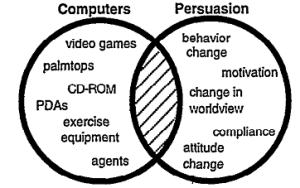
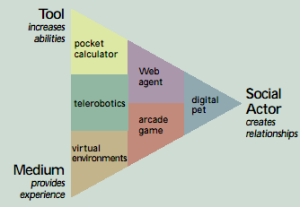
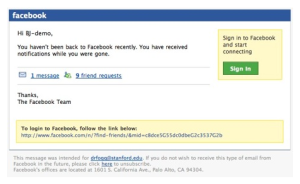
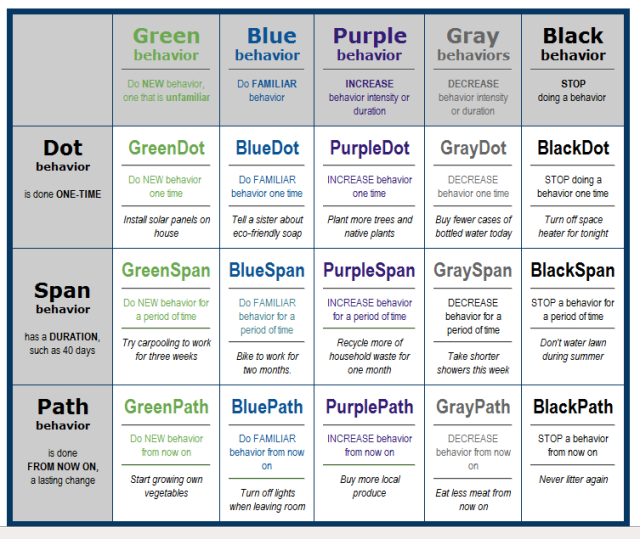
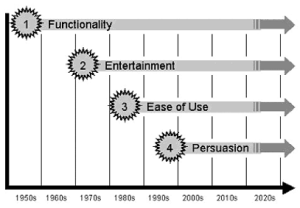


Heya i’m for the first time here. I came across this board and I find It really helpful & it helped me out much. I am hoping to present something again and aid others like you helped me.